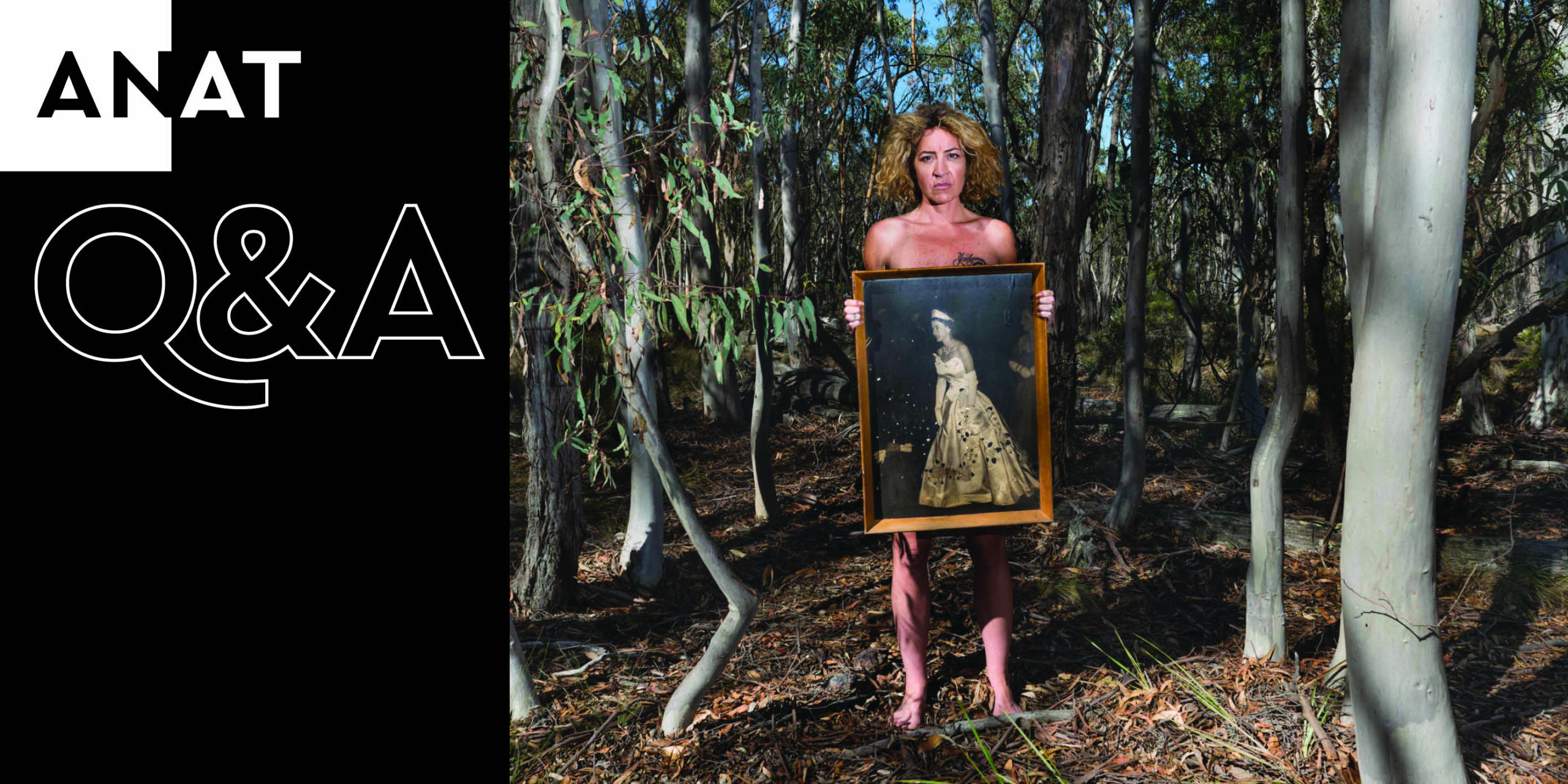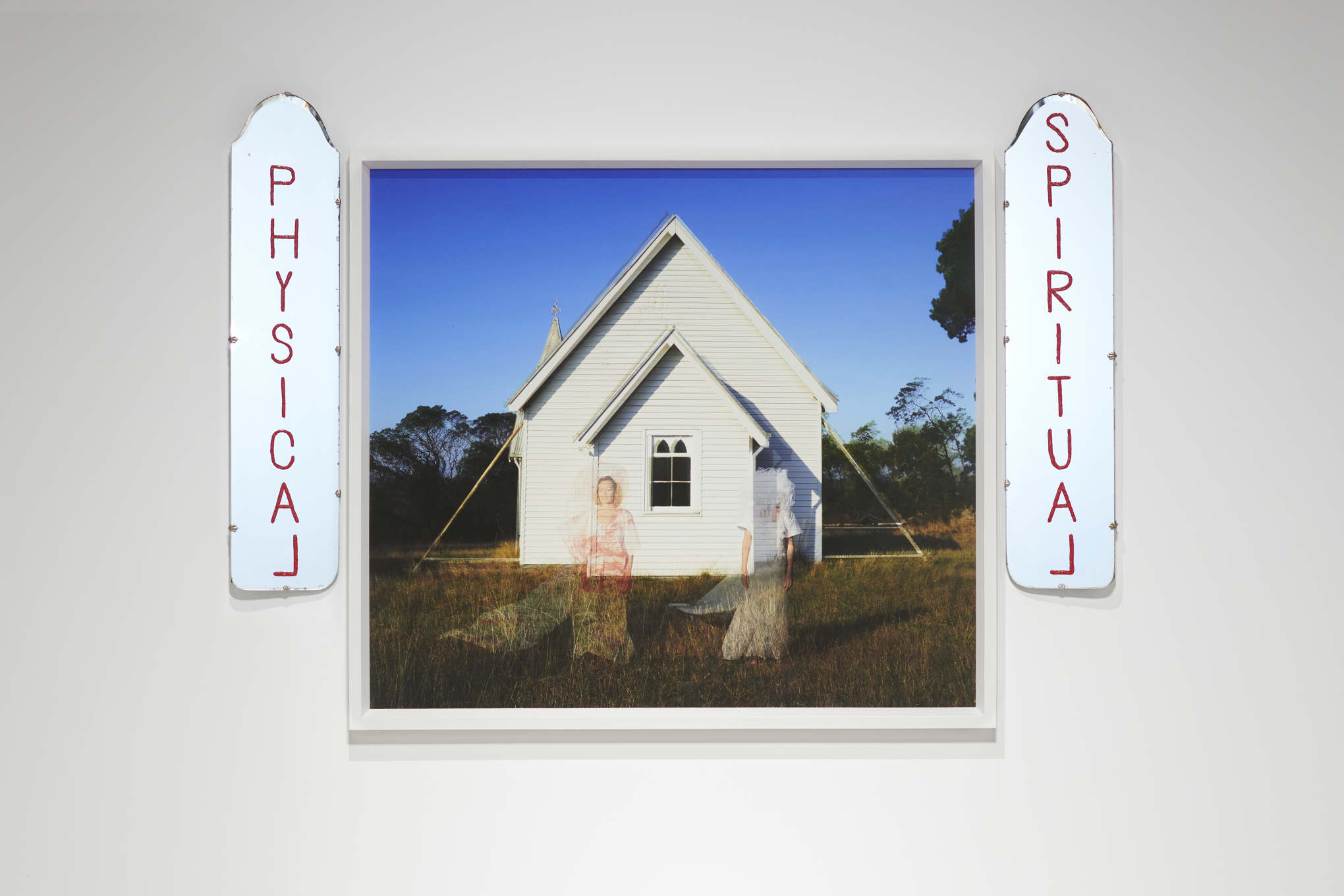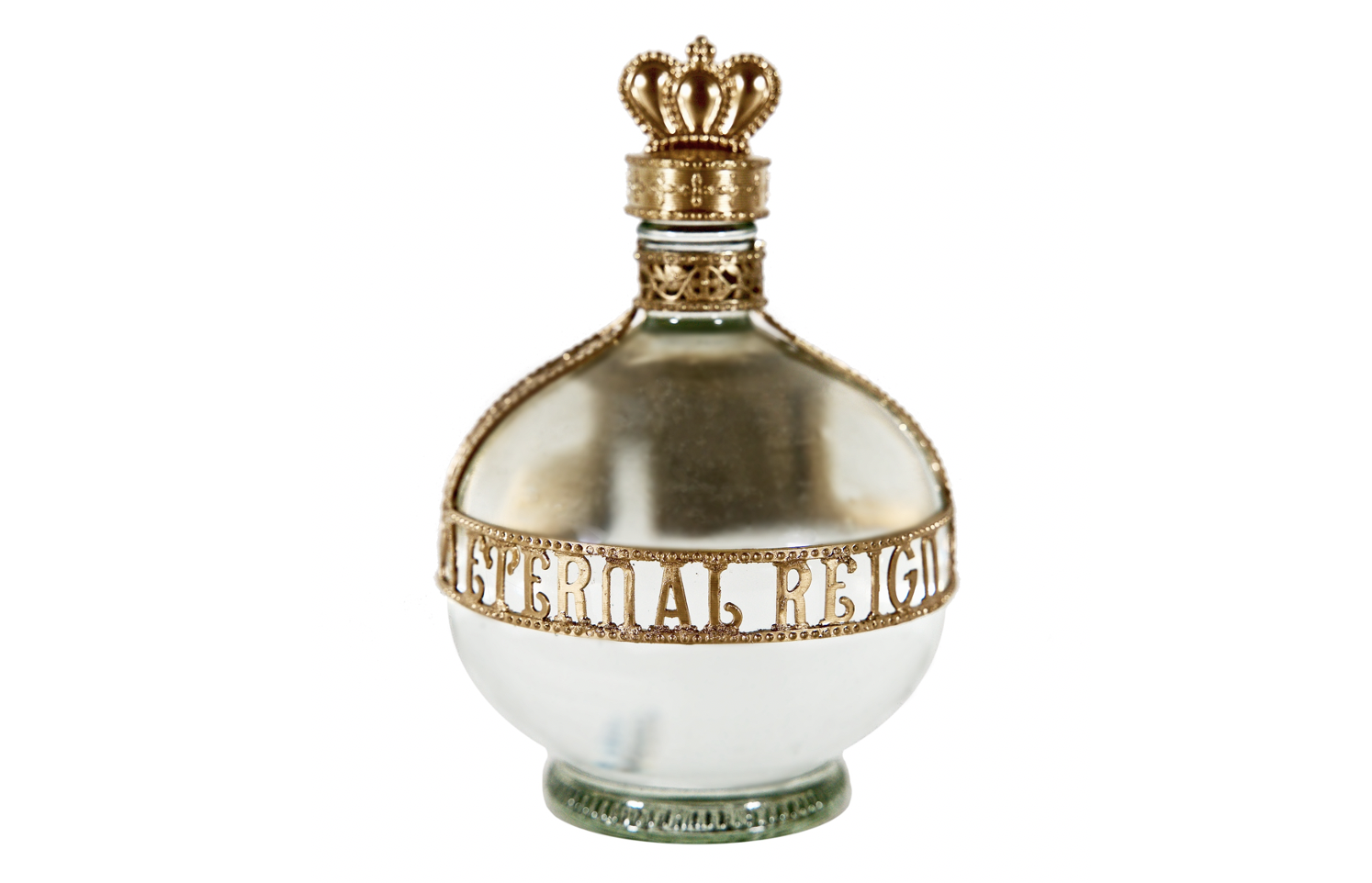Q&A March
A monthly Digest feature where we ask questions about the nature of creative collaborative practice, the stories artists tell and ANAT’s place within the art + science + technology network.

Amala Groom, dhaagun ngiyanhigin.gu nganhundhi (the land owns me), 2018, Epson ultra chrome pigment on Canson Photographique 100% cotton rag 114 x 169 x 5cm. Edition of 5 + 1AP. Image courtesy of the artist.
Amala Groom
Amala Groom is a Wiradyuri conceptual artist who lives and works on Wiradyuri Country in Kelso, NSW. Her practice, as the performance of her cultural sovereignty, is informed and driven by First Nations epistemologies, ontologies and methodologies.
Amala proactively seeks to dismantle the Colonial Project by asserting the argument that colonialism is not just disadvantageous for First Peoples but is, in fact, antithetical to the human experience. On a deeper note, Groom intends to make work that speaks to the union of all peoples and to the indivisibility of the human experience that traverses identity, culture, race, class, gender and religious worship.
Supported by the Australia Council for the Arts, the Ian Potter Cultural Trust, Create NSW and Arts OutWest, Amala recently conducted a residency at the British Museum with The Season; the cultural exchange between UK/Australia (2022). Recent awards include the Create NSW First Nations Creative Fellowship with the State Library of NSW (2022/23) and the Create NSW 21/22 Visual Arts Commissioning Grant for $100K (2022).

Amala Groom, Myths & Legends, 2022, acrylic on vintage deadstock offset lithograph, 61x 46cm x 5. Edition of 10 (series x 5). Image courtesy of the artist. Myths & Legends: Britannia, 2022 (1/5) single channel 4K video, no sound dimensions variable, 01:00 mins.
Can you tell us about your connection to ANAT and your New Light work Myths & Legends: Britannia?
I first met the ANAT Team in 2019 when I was invited and supported by The Australia Council for the Arts to exhibit The Visibility of Blackness and attend the 25th International Symposium on Electronic Art (ISEA), curated by Hee-Eun Kim, Asia Culture Centre, Republic of Korea. It was my first presentation of work overseas as an artist and it was an amazing opportunity for bonding to share this experience with other Australians.
The two other First Nations artists that I showed with at ISEA were Raymond Zada and Brad Darkson whose works were 2017 New Light commissions. I can’t thank Raymond enough for his generosity in editing my work so that it fit the technical specifications of the Olympic swimming pool sized monitor that took up the façade of an entire building. The works were presented as a looped reel and there were glitches in the programming, so we ended up spending hours every night for the entire week watching the loop to try and get documentation of our work.

Amala Groom, The Visibility of Blackness, 2018 (production still) two channel synchronised, 4K UHD video with sound dimensions variable, 01:30 mins. Edition of 5 + 1AP, in situ The 25th Symposium on Electronic Art, curated by Hee-Eun Kim, Asia Culture Centre, Republic of Korea 2019. Documentation: Art Center Nabi.
Fast forward a few years and my gallery blackartprojects had just presented my work Myths and Legends (2022) as a suite of posters at Melbourne Art Fair and I was heading to London to do a residency at the British Museum, and I really wanted to activate the posters to make them site specific. I had a super tight deadline (a reoccurring thematic in my life – insert smiley face here) to shoot the New Light commission which is a 60 second clip of me face to camera holding the POPULAR SOVEREIGNTY poster as a single panning shot which pulls out to show me in front of gates and then as it continues to pan out it’s me out the front of Buckingham Palace.

Amala Groom, Myths & Legends: Britannia, (production still) 2022, single channel 4K video, no sound dimensions variable, 01:00 mins. Image courtesy of the artist.
I didn’t know at the time, but I had covid that day and we shot at sunrise on the summer solstice (also news to me until later) so when you see me squinting know that the struggle was real, and it was super hard to keep my eyes open. There was something unfathomably powerful about me being in the physical location of the ‘Empire’ making performance art and critiquing it. I need to redo the rest of the shoots because there were other inconsistencies which I wasn’t happy with – making moving image works is challenging enough in itself and shooting without permits in public spaces just adds another dimension and as soon as you ‘activate’ a space as an artist with a camera/film crew it draws public attention and people do weird things like make recordings on their phones – who are they going to show that too? It’s like photos of people on holidays – I still don’t know why people do it – no one cares. Also, my dad was a photographer, so I think that I have a particular kind of respect for image making which no doubt comes from being a kid where our tiny Bondi bathroom flat doubled as a darkroom. Anyway… I’m stoked I got to make this work for New Light and it looked awesome on the outdoor screens at the Adelaide Festival Centre. The ANAT Team are awesome to work with and I look forward to working with them again.
Everybody’s a storyteller. What stories are you telling through your work?
I guess the easiest way to answer this is say MY OWN. My work is autobiographical – I actually think all art is because whatever you produce as an artist, it is an expression of your own experience and perceptions and is a viewpoint of the lens of your own reality.
I don’t want to reprint the ‘about’ section of my website here because these kinds of casual interviews I think are about translating your practice to audiences to make it more accessible. When I write about my own work it tends to be super academic and that’s because I am always trying to find words in English that translate my Wiradyuri ontology and then I end up making up phrases like ‘geographic osmosis’ to give credence to justify or attempt to explain why I need to physically travel to a particular place in the world to walk country because country retains memory and that memory is transferable.

Amala Groom, one and the same: as above so below, 2022. Epson ultra chrome pigment on Ilford Gold Fibre Gloss 310gsm, antique mirrors, acrylic, 105 x 144cm. Single edition. Image courtesy of the artist.
How has your practice changed over time?
Good question. As I grow my work grows and I have revisited different works and iterated them as I have developed as a person and as an artist. I think the best example of this is one of the first works that I ever made (like the first semester of my Fine Arts degree) was in 2014 with The Invisibility of Blackness.
In 2018 I made The Visibility of Blackness – to paraphrase my artist statement “The progression across the iteration not only manifests in uniting the western linear notions of time with the Aboriginal aspect of its indivisibility, for the artist this is personal; a reflection upon ‘growing up’, of maturing into her cultural remembering. Moving from the desire to have her external sovereignty recognised by the Colonial Project to embody the knowingness that her self-sovereignty matter most”.

Amala Groom, Does she know the Revolution is coming?, 2017 (production still) six channel digital video, colour, sound, dimensions variable 09:56 mins. Edition of 5 +1AP. Image courtesy of the artist.
What are you working on at the moment?
My practice is mostly research based and I always have multiple projects on the go at once – longer form moving image series like Raised by Wolves, which “explores the relationship between alchemy (looking up into spirit) and science (looking down into matter) following the alchemical belief that life is really a wedding; a marriage between the lower forces of material and the upper forces of spirit with the human being as the ultimate construct between these two forces”; my Fellowship with the State Library of NSW where I am “occupying space in the academy in the remembering of Wiradyuri, culminating in a series of live performances” which I am doing in conjunction with a Graduate Certificate of Wiradyuri Language Culture and Heritage and as a part of a wider Bachelor of Arts (Major in Philosophy) degree at Charles Sturt University; and my studio practice is focused on text based interventions into iconic Australian and international facsimiles (everyday cheapo reproductions that you can always get at op shops). There’s more – there’s always more with me lol… I love what I do, and my work is my life.

Amala Groom, aeternum imperium, 2020 (detail) – 1/5 in the Number 42 series, glass, metal, spray paint, rainwater, red velvet. 18 x 14 x 14cm x 13. Edition of 3 + 1AP. Image courtesy of the artist.
What advice would you give to your younger self? (when you were just starting out as an artist)
Back yourself. Conviction is key. Everything in your life up until now has been a reccy.